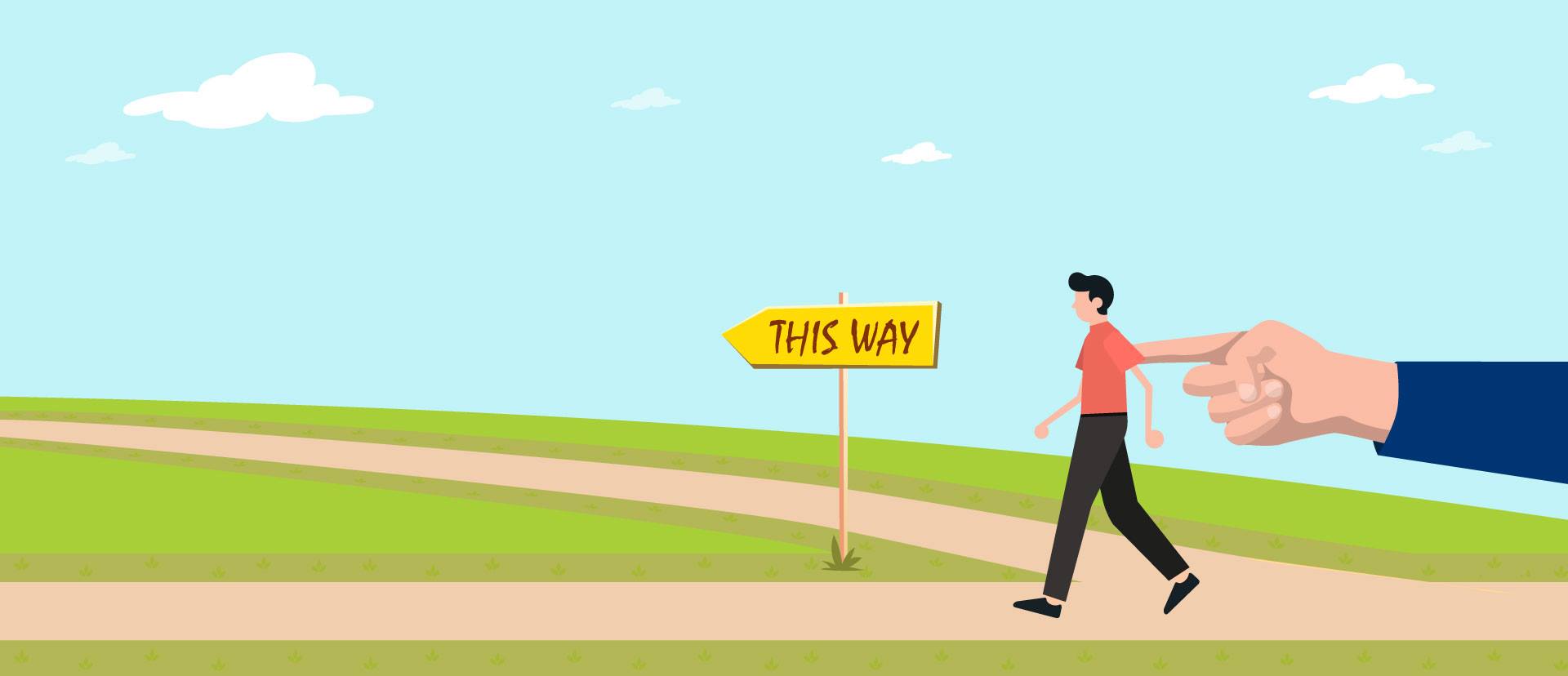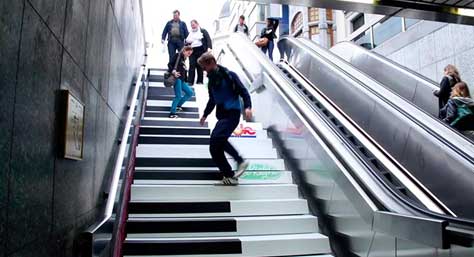
Ever felt like you were tricked into something that wasn’t really an active choice on your part? Like unconsciously following a trail of colorful sprinkle stickers on the floor that led to the candy section of a supermarket? You did it out of sheer curiosity. Like these folks here who couldn’t keep themselves from tiptoeing on a giant piano.

An experiment like this went a long way in teaching marketers that when nudged for a good cause, customers will line up. This, by the way, is the famous Mozart Piano Stairs first implemented in Sweden. The idea struck such a good chord with the audience, it got 66% more people than normal to ditch the comfortable but boring escalators and choose the healthy and fun way out. Not just that, the concept garnered 23 million Youtube views and was emulated in cities like Milan, Melbourne, Istanbul, and Auckland.
That’s the Nudge theory for you. If we had to define it – The Nudge theory is about designing choices in such a manner that it taps into the instinctive and rather irrational side of people, to subtly influence their decisions.
“By knowing how people think, we can make it easier for them to choose what is best for them, their families and society,” wrote Richard Thaler and Cass Sunstein in their book Nudge, which was published in 2008.
These two gentlemen are the bright minds behind the Nudge theory. The story of how they got a majority of urinal users at the Amsterdam airport reduce “spillage” by simply installing fly shaped stickers on the urinal for a fun target, is quite popular.
The whole concept of nudge is based on indirect encouragement. Rather than penalizing people for not doing the right thing, a better approach would be to subtly induce or motivate a change in behavior. Here’s how these two approaches stack up:
| Enforced Change | Nudge Techniques |
|---|---|
| Asking people to sign up for a pension plan | Implementing an automatic opt-in across firms from which employees can choose to opt-out. |
| Budget shopping on food | Taking a basket instead of a trolley |
| Ads persuading people to eat healthy | Placing healthier options near PoS at retail stores |
| Requesting to reduce food wastage in restaurants | Using relatively smaller serving plates |

As a popular behavioral economics concept, nudging seeks to curb resistance and conflict, which commonly arise from more forceful directingto bring about change. Rather than actively confronting them to make a decision, a more libertarian approach will always win better receptiveness.
Now that we know how nudging works, let’s get to what could it mean for us as marketers.
Playing decoy
This has been often tried in restaurant menus. An expensive but not so appeasing dish is placed right above a delectable choice that’s a little cheaper, thus making it seem like a valuable deal. This way restauranteurs get diners to eat what they want while even they feel fulfilled having bagged a good bargain. This strategy can be employed in e-commerce as well. By showcasing relatively higher-priced products around what a prospect actually intends to buy, e-tailers can maximize their profits.
Offering social proof
As social creatures, we tend to lean into those herds, because if something has gained the majority’s approval or number we consider as decent, it out to be a good choice. A hotel eager to get its guests to make more sustainable choices requested them to reuse their towels. A simple sign saying “Please consider the environment and reuse towels.” didn’t help much. But when they said, “75% of our guests reuse towels,” they saw a 26% boost in towels reuse.
Marketers can similarly use this power of the majority to their advantage. How? Try marking up your most viewed or most sold products on your website. If you have an e-commerce site, let your number of customer reviews or ratings for a product be given prominence. After all, reviews are known to prompt a sale better than a gazillion ads put together. You can even run a monthly campaign on your most view or most sold products to spark interest.
The power of choice
As a brand manufacturer, I may want to offer everything under the sun to avert my customer’s eye from a rival. However, it has been noticed that the sheer pressure of making a choice also tends to put prospects off. A brand selling jams conducting an A-B test at a supermarket where it had installed sampling kiosks. One of them a variety of 24 flavors while another provided just 6. When the conversions were measured the one with the least choice had earned 30% while the other just 3%. This only goes to prove that the easier you make it for your customers to decide, the more chances they will buy from you.
Nudging for a cause
We couldn’t deny that nudging is a manipulation. But it is only true for those who can be manipulated. For instance, someone who finds soccer distasteful cannot be coaxed into buying a soccer ball even if he watches a movie about it. But for those who are undecided, or have never considered it in the past, it’s a different scenario altogether.
There are various forms of nudging employed globally. From politicians to lobbyists and beyond – it’s a form of persuasion that’s is both loved and despised. However, if used wisely, i.e. if as marketers you can prove to customers the value they stand to gain in making a particular decision they will win their continued loyalty.
Now that you have been familiarized with the power of nudging, feel free to take small steps into exploring its potential. A simple subject line or copy based AB testing on your next email campaign can reveal what works with your audience. Playing around with your opt-ins and opt-outs are yet another way to coax them into signing up for your weekly newsletters or other giveaways. We’re all ears to know which of these or any other nudge technique worked best for you.
Leave a comment
Comments (0)